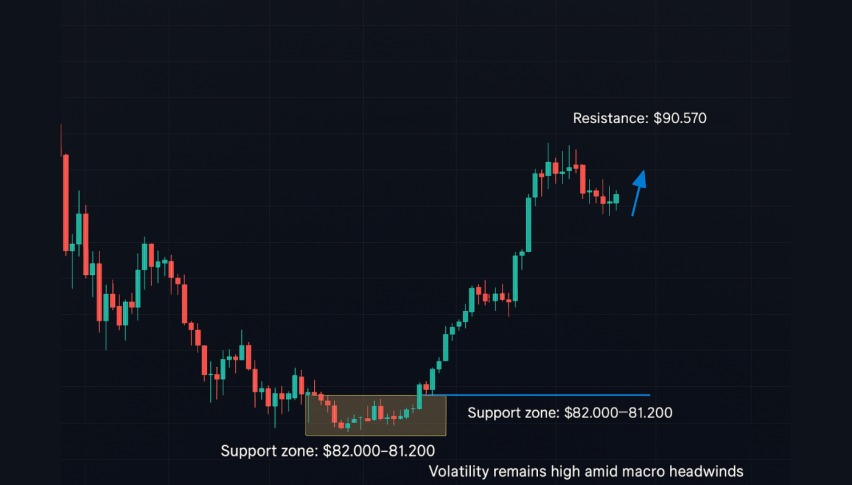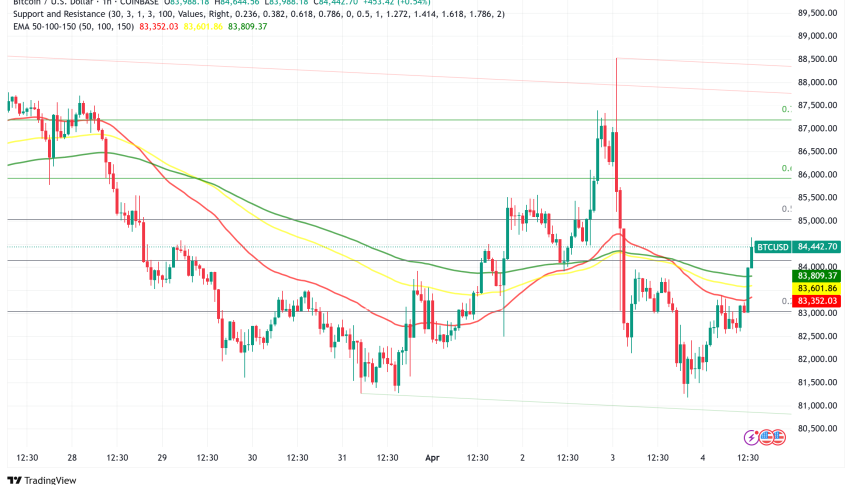Forex Signals Brief May 13: Preparing for US Inflation CPI
Last week there was some volatility in the forex market as most forex pairs bounced up and down, however, the trading range was small as traders await the US CPI inflation report to be released this week. The USD stopped retreating after the fall of the previous week, however, everything remained uncertain in forex.

However, there was a bullish move in the stock markets, with European indices closing at record highs, while the US counterparts closed the week near all-time highs, which suggests that we will likely see new record levels in the S&P 500 and Dow Junes this week. We had two major central bank meetings, but nothing to change the sentiment in the markets, with the RBA and the Bank of England keeping interest rates unchanged. The UK Q1 GDP report was surprising, but that didn’t help the GBP much.
This Week’s Market Expectations
Today’s release of the Reserve Bank of New Zealand’s (RBNZ) quarterly Survey of Expectations provided insights into inflation expectations. In the previous quarter’s release, both business leaders and professional forecasters indicated a perception of slowing inflation. The 1-year out rate fell to 3.22% from 3.60%, while the 2-year out indicator dropped to 2.50% from 2.76%. Following the previous quarter’s data, analysts from ANZ noted that the RBNZ might have hoped for a more significant decline in one-year inflation expectations. Conversely, Westpac suggested that the RBNZ would likely be relieved to see inflation trending downwards and moving closer to its target. During the most recent RBNZ meeting on April 10th, the Official Cash Rate (OCR) was held steady at 5.50%, in line with market expectations. However, the central bank maintained a hawkish-leaning tone by indicating a commitment to a restrictive monetary policy stance.
Here’s a summary of the upcoming events for the week:
Monday:
- New Zealand Services PMI: A gauge of business sentiment in the services sector, indicating the level of expansion or contraction.
- SNB Chairman Jordan Speaks, FOMC Member Jefferson and FOMC Member Mester Speak.
Tuesday:
- Japan PPI: The Producer Price Index measures the average changes in prices received by domestic producers for their output.
- UK Labour Market Report: Provides insights into the UK’s employment situation, including unemployment rate and wage growth.
- Eurozone ZEW: The ZEW Economic Sentiment Survey measures institutional investors’ sentiment regarding the economic outlook in the Eurozone.
- US NFIB Small Business Optimism Index: Reflects the confidence level of small business owners in the US.
- US PPI: The Producer Price Index measures the average changes in selling prices received by domestic producers for their output.
- Fed Chair Powell Speech: Federal Reserve Chair Jerome Powell delivers a speech, potentially offering insights into monetary policy and economic outlook.
Wednesday:
- Australia Wage Price Index: Measures changes in wages and salaries for employees in Australia.
- Eurozone Industrial Production: Provides data on the volume of production in the Eurozone’s industrial sector.
- US CPI: The Consumer Price Index measures changes in the prices paid by consumers for goods and services.
- US Retail Sales: Provides data on the total receipts of retail stores, reflecting consumer spending trends.
- US NAHB Housing Market Index: Reflects homebuilders’ confidence in the US housing market.
- PBoC MLF: The People’s Bank of China’s Medium-term Lending Facility, providing liquidity to financial institutions.
Thursday:
- Japan GDP: Measures the total value of all goods and services produced by Japan.
- Australia Labour Market Report: Provides insights into Australia’s employment situation, including unemployment rate and job creation.
- US Housing Starts and Building Permits: Provides data on the number of new residential construction projects and permits issued.
- US Jobless Claims: Reflects the number of individuals filing for unemployment insurance for the first time.
- US Industrial Production: Measures the total output of the US industrial sector.
Friday:
- New Zealand PPI: The Producer Price Index measures changes in prices received by New Zealand producers for their output.
- China Industrial Production and Retail Sales: Provides data on the output of China’s industrial sector and the sales of retail goods.
- Fed’s Waller Speech: Federal Reserve Governor Christopher Waller delivers a speech, potentially offering insights into monetary policy and economic outlook.
Last week we opened 16 trading signals, as markets remained mostly quiet and the trading range was tight. We changed sides many times, since there was no clear direction, but in the end it all turned out pretty well, since we only had four losing signals, while the rest closed in profit, with a couple of trades remaining open for the new week.
Gold Heads for the 20 Daily SMA
Gold has experienced volatility, initially surging above $2,400 in April, but then falling back down below $2.300 to find support at $2,280. In the last two weeks, Gold price traded in the range of $2,310 to $2,350. However, last week we witnessed some renewed buying pressure, which sent XAU above the 20 daily SMA (gray), as well as above the top of the range, with buyers now eyeing the $2,400 level again.
XAU/USD – Daily chart
NZD/USD Fails at the 200 Daily SMA Again
The University of Michigan’s inflation projection statistics had a notable impact on the global foreign exchange market, leading to a strengthening of the US dollar, which in turn exerted downward pressure on the NZD/USD pair. By the end of the week, the NZD/USD pair had experienced a decline of approximately 0.2% as buyers seemed to lose momentum. This sluggish trend momentum suggests a potential increase in bearish sentiment, as downward movements have pushed the pair to lows around 0.60.
NZD/USD – Daily Chart
Cryptocurrency Update
Going Long on Bitcoin Reverses at $61,000
Bitcoin has been making lower highs since March, with the price falling to around $61,000 yesterday, where we decided to open a buy BTC signal. Technical indicators like the 50-day and 20-day Simple Moving Averages (SMAs) have now become resistance levels for Bitcoin, capping the bounces. However, BTC has been finding support near the 100-day Simple Moving Average (SMA) (green line), where we deiced to buy BTC yesterday.
BTC/USD – Daily chart
Ethereum Returns Below $3,000 but the Support Holds
Ethereum (ETH) has demonstrated volatility as well, experiencing fluctuations that have led its price to dip below the $3,000 threshold on multiple occasions. Additionally, it has occasionally traded below the Simple Moving Averages (SMA) on the daily chart. Despite these fluctuations, Ethereum has exhibited resilience by frequently recovering and surpassing the $3,000 mark. This resilience suggests that there is strong support below the $3,000 level.
ETH/USD – Daily chart



